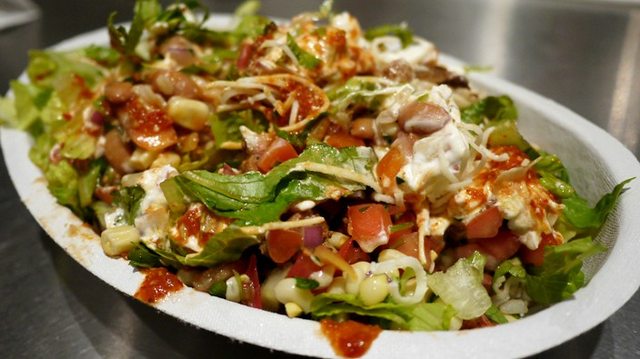
The Backstory
Since having moved to New York City, it's rather hard to think of the last time I wasn't jonesing for a Chipotle steak burrito. But these burritos certainly aren't a bargain, especially in The Big Apple. While still a college student at Yale, I remember my willingness to pay whatever cost to soothe my hunger pains. And now as a working adult in Manhattan, my cravings for Chipotle still linger, but it seems like the prices climb higher and higher everywhere I move. I was fairly certain that not everyone was paying Manhattan prices for a burrito.
The Question
What is the geographic distribution of pricing for Chipotle products in the United States?
The Data and Conclusions
Despite being a non-franchise chain, Chipotle locations are still cropping up rapidly and operating enormously profitably. In 2013, the chain generated approximately $2.17 million per location (1,595 locations) which was good for 6th amongst Fast Food and Fast Casual restaurants [QSR Magazine]. First place Chick-Fil-A generated $2.85 million per location (1,775 locations). In terms of restaurant footprint, California ranks first amongst states, and Chicago ranks first amongst cities. Interestingly, multiple cities in Virginia have the highest number of locations relative to residential population. The tables below shows basic descriptive ranks based on geography and population size. Note that per capita was scaled to 100,000 residents.
| Rank | City (Ranked by Population) | Locations |
|---|---|---|
| 1 | Los Angeles | 15 |
| 2 | Chicago | 28 |
| 3 | New York (Brooklyn) | 6 |
| 4 | Houston | 22 |
| 5 | New York (Manhattan) | 26 |
| 6 | Philadelphia | 6 |
| 7 | Phoenix | 11 |
| 8 | San Antonio | 8 |
| 9 | San Diego | 13 |
| 10 | Dallas | 13 |
Below is the mapped distribution of chicken burrito prices across more than 1,700 locations. The price segmentations are not regular intervals but represent major price categories implemented by Chipotle. Search for locations and click on the pins for additional details about the location, steak burrito prices, and even guacamole prices.
The distribution of the prices should come as no surprise with major cities commanding higher prices compared to smaller neighboring areas. But when it comes to price discrepancies, nothing compares to Manhattan. Even in major cities such as San Francisco, Las Vegas and Chicago, the price markup is typically only 25-45 cents or about 4-7 percent more. However, a chicken burrito costs $1.25 (18 percent) more in Manhattan than across the Hudson in Hoboken, NJ. You can see more price rankings for chicken burritos below.
Lucky for me, I've lived in both states with the highest average prices (NY, CT). Surprisingly, almost 60 percent of all Chipotle locations offer burritos at the lowest price point ($6.50). Only New York City locations (1.9 percent of locations) price chicken burritos at the $8.27 premium. However, the single most expensive U.S. location is in Yonkers, NY ($8.31). Connecticut is a rather notable state with a distinct price increase along the coastline heading towards New York. Props to our committed neighbors in Canada shelling out $8.95 for a chicken burrito.
The Tech and Sources
This project was the natural coupling of my love for food and data. I took this opportunity as a challenge to learn new tools in order to tackle the "real questions" that matter to me. First, I used various Python web automation scripts to "order online" across the 1,700+ locations on Chipotle.com. It also took some creative workarounds to gather the unique location IDs that matched the prices with the physical locations. I also learned how to utilize the Google Maps and Geocoding API along with Fusion Table capabilities. Last, I re-familiarized myself with Javascript and made my first attempts at creating the charting and tabling collateral in D3.js, a popular data visualization library. Hopefully next time around, I'll be doing all of the data analysis within the Pandas library rather than switching in and out of Excel.
As a disclaimer, this information is not officially endorsed by Chipotle and exists as a collection of publicly displayed data. Population data was collected from Census Bureau . Unfortunately, I was not able to capture the volume of working commuters by location. Moreover, Chipotle sales volume by location would add a really interesting additional layer for analysis for location vs. price vs. sales. The Google geocoded data should not be used for navigation purposes. Data was collected on December, 27, 2014. Be sure to email me with suggestions and comments. And be sure to share with your friends if you find it interesting. Stay tuned for the next post.